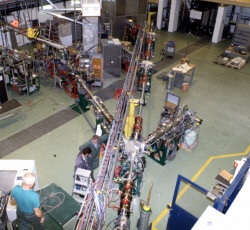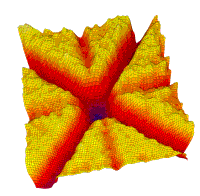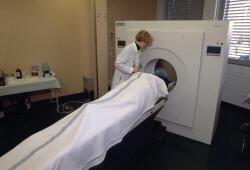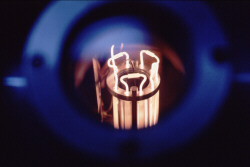


Scienza delle basse energie in un laboratorio per le alte energie
 |
|
Not all of CERN's accelerators are at the high energy frontier. The ISOLDE
facility is a unique source of beams of low-energy unstable particles with applications
ranging from medicine to astrophysics. |
| Semiconductors are the heart of the computer industry. They rely on implanting certain
materials into other materials. Unstable versions of elements used for such implants make
it possible to tell precisely where these elements end up inside semiconductors. This
provides an invaluable tool for the computer industry, helping to refine chip
manufacturing techniques. |
 |
 |
In medicine, radio-isotopes are prepared for use in diagnosis and therapy at the
Geneva Cantonal Hospital. ISOLDE scientists have also played an important role in
developing the PET technique of medical imaging. |
All elements except the very lightest are cooked up in stars. All the carbon on which life
is based, for example, originally came from the stars. Really heavy elements, like gold
come from exploding stars at the ends of their lives: supernovae. But precisely what goes
on in these cataclysmic explosions which release more energy in a few minutes than our sun
will generate in its whole life, is still unclear. Scientists know that the production
mechanism must involve radioactive elements, and ISOLDE's ability to make such elements is
helping scientists to understand exactly what happens when an old star goes bang.
The main thrust of ISOLDE research is pure science. It is the study of nuclei which are
unstable because they have too many protons or neutrons. This allows scientists to refine
their models of atomic nuclei.
| ISOLDE relies on accelerated protons which are smashed into a target. The impact
produces a whole range of unstable radioactive isotopes. These are made into a beam, and
the individual isotopes required by experiments are selected by magnets. |
 |
© Copyright CERN - Last modified on 1998-06-03 - Tradotto da Sofia Sabatti



